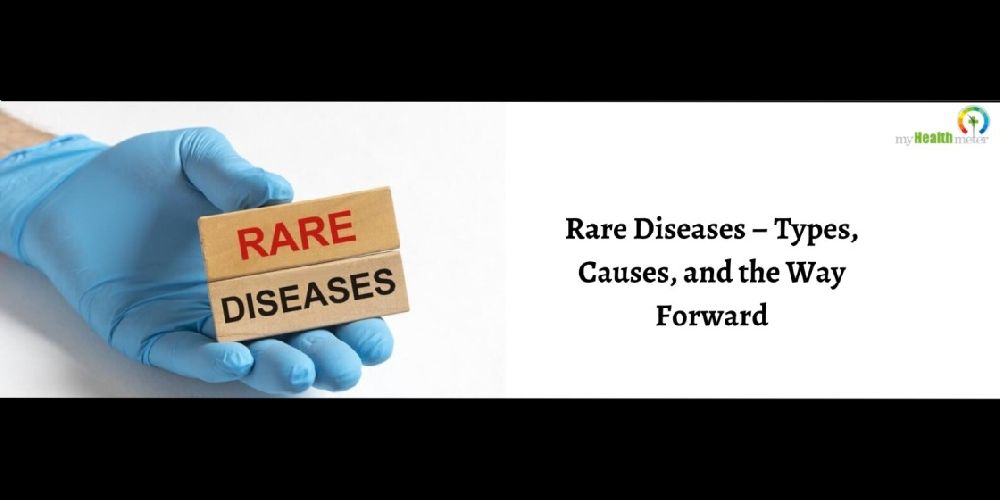World Rare Diseases Day: Types, Causes, and the Way Forward
-
February 20, 2023
-
661 Views
The world observes Rare Diseases Day on February 28th each year and the primary objective is to raise awareness amongst the general population about the impact of these diseases on patient’s lives. Raising awareness of rare diseases is critical because one in every twenty people will be diagnosed with one at some point in their lives. Despite this, the majority of rare diseases have no cure, and many go undiagnosed.
In India, data on how many people suffer from various diseases that are considered rare globally is lacking. So far, all cases have been diagnosed at tertiary hospitals. The scarcity of epidemiological data on the incidence and prevalence of rare diseases impedes understanding of the disease and the development of a definition. It also impedes efforts to accurately estimate the number of people affected by these diseases and describe their morbidity and mortality. The economic burden of rarest diseases is unknown in this scenario and cannot be adequately estimated using existing data sets.
What are Rare Diseases?
Various diseases and illnesses have been successfully remedied throughout human history. Despite all technological advancements, some diseases are still unknown to us. These are considered rare diseases. "A rare disease, according to the World Health Organization (WHO)," is a lifelong disease that affects one in every 1000 people. The majority of developed countries have their own definitions of rare diseases. India has yet to define a rare disease. However, regardless of the definition, a rare disease has a very low prevalence and no proven diagnosis or treatment. Rare diseases affect approximately 6000 - 8000 people worldwide. Many new diseases are being added to this list on a regular basis. However, a small group of around 350 rare diseases is responsible for 80% of the cases.
Most Prevalent Rare Diseases in India
Approximately 450 rare diseases have been identified in India, according to a 2017 study published in the Indian Journal of Pharmacology. Furthermore, according to 2011 national population census data, the country's rare disease and disorder population is estimated to be 72,611,605. Here is a list of some of India's rare diseases.
Hemangiomas: These are noncancerous growths composed of blood vessels. It can spread throughout the body and, in rare cases, turn cancerous. It is most common in infants.
Gaucher’s disease: It is a genetic condition caused by a deficiency in an enzyme that breaks down fat, affecting fat metabolism and causing fat accumulation in cells and organs.
Auto-immune diseases: It includes a wide range of diseases in which immune cells attack healthy cells. Lupus, multiple sclerosis, Sjogren's syndrome, celiac disease, and other autoimmune diseases are common.
Sickle-cell Anaemia: Sickle cell anaemia is an inherited disease that causes red blood cells to become rigid and sticky, forming sickles, reducing oxygen-carrying capacity and thus anaemia.
Thalassemia: It is a type of blood disorder in which the body produces abnormal haemoglobin, which destroys red blood cells, resulting in anaemia. It is a genetic condition.
Hemophilia: It is also known as "Royal disease," and it is a rare genetic disorder in which the blood fails to clot due to a lack of blood clotting factors.
Causes of Rare Diseases
The precise causes of the occurrence of rare diseases are still unknown. Most genetic disorders, however, result in rare diseases. However, genetic disorders do not cause all rare diseases. Many rare diseases are caused by uncommon infections, autoimmune disorders, and so on. Even rare types of cancer are common.
One of the most common causes of rare diseases is genetic mutation. Because genetic information is passed down through generations, some rare diseases caused by genetic mutations may be hereditary. Environmental factors, exposure to harmful chemicals, smoking, diet pattern, and so on are some of the other causes of rare diseases.
The risk of rare diseases may increase as pollution and degradation of our surrounding environment worsen over time.
The Way Forward
Healthcare services for rare diseases are largely inaccessible to the majority of patients in India, owing to the high cost of treatment as well as the difficulty in locating qualified specialists. The NPRD categorizes these diseases into three categories: those amenable to one-time curative treatment, those requiring long-term/lifelong treatment courses that are relatively inexpensive, and those requiring costly treatments. Patients in need of long-term supportive therapies face difficulties in obtaining state funds or crowd funding.
The National Digital Health Mission (NDHM) can help improve rare disease diagnostics. During the COVID-19 pandemic, numerous cutting-edge diagnostics were developed that can be repurposed for rare diseases. However, Indian experts believe that scaling these capabilities to the local level will be difficult, despite the fact that they are already widely used by the country's bio-community. To maintain a decent quality of life, most rare diseases necessitate lifetime treatment and support for the patient. Hiring caregivers is expensive and often exhausts the families of the patients physically, emotionally, and financially. As a result, palliative care, rehabilitation, and counseling services must be integrated as part of the management of rare diseases.
Medical Disclaimer
Any medical information referred to in or through our blog is provided as information only and is not intended:
- as medical diagnosis or treatment
- to replace consultation with a qualified medical practitioner
On the upcoming Rare Diseases Day on February 28th, let’s join hands and raise awareness on this issue that needs urgent attention and research. By educating those around us, we can surely hope that treatment in the future can be accessible and affordable for everyone.





